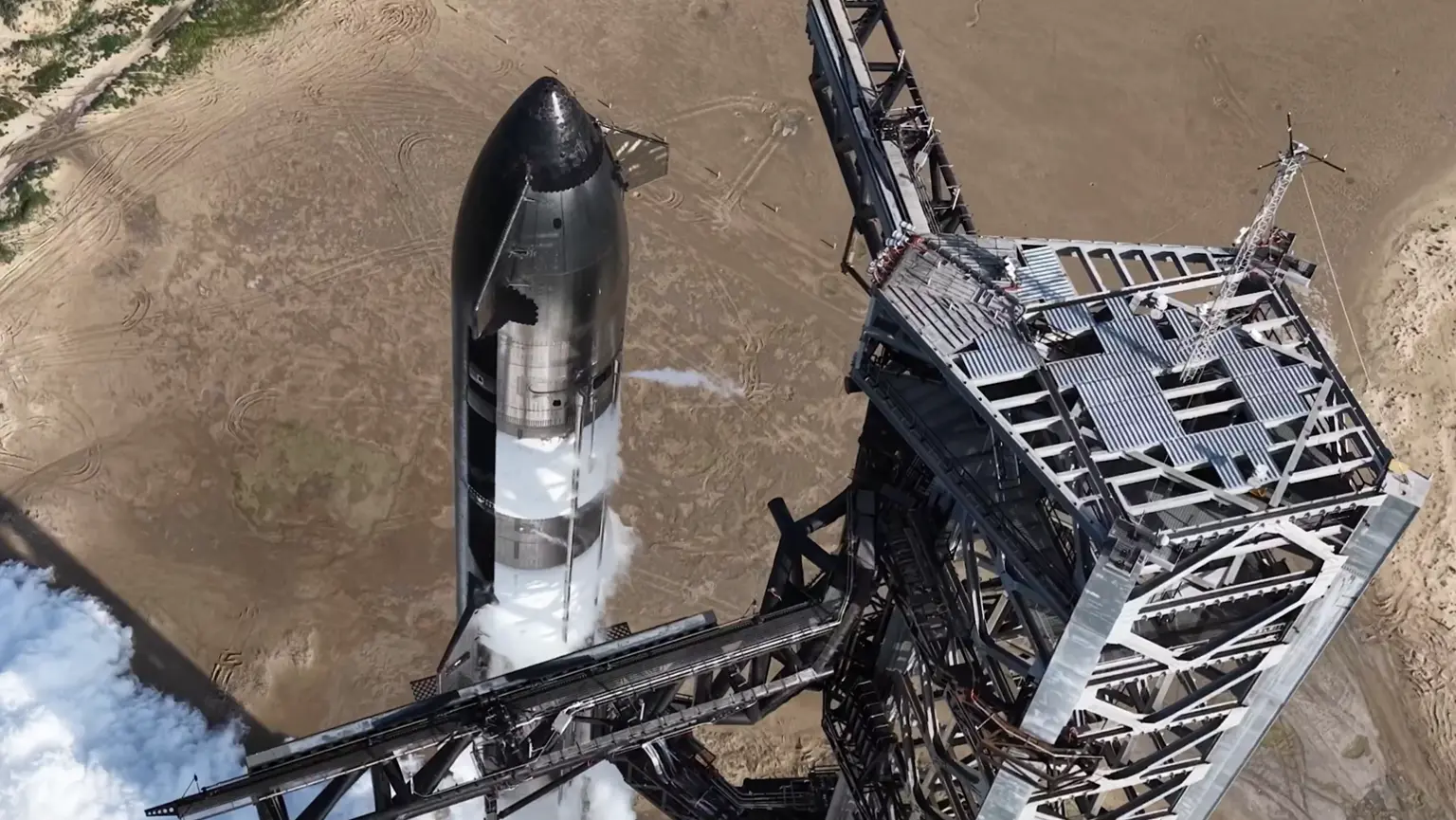
SpaceX gears up for Starship Flight 11 after Flight 10’s booster catch success. A bold step toward full reusability for Mars missions and satellite deployment.
How SpaceX’s Starship Flight 11 Builds on a Historic Booster Catch Breakthrough
Published: 30-09-2025 | By: Rapido Updates
Flight 10’s Success: A Giant Leap for Reusability
On 29-09-2025, SpaceX achieved a major milestone with Starship Flight 10. Booster 16 was successfully caught by the Mechazilla tower at Starbase, Texas—a first in orbital-class rocket recovery. Meanwhile, Ship 37 completed a controlled reentry and splashdown in the Indian Ocean, marking another step toward full vehicle reusability.
This dual success demonstrated SpaceX’s ability to recover both stages of its Starship system, a critical component for future Mars missions and cost-effective satellite launches. The Mechazilla catch system, featuring robotic arms mounted on the launch tower, proved its capability to safely capture a descending booster without landing legs.
CEO Elon Musk praised the team on X, calling it “a huge win for humanity’s multiplanetary future.” Engineers are now analyzing data from Flight 10 to refine systems for upcoming missions.
Flight 11: What’s Planned for October 13, 2025
Starship Flight-11 Booster Mission – SpaceX is now preparing for Starship Flight 11, scheduled for 13-10-2025. This mission will use Booster 15 and Ship 38, aiming to replicate the booster catch and expand testing of reentry and payload deployment systems.
Flight 11 will carry Starlink simulators to test satellite deployment mechanisms in orbit. These simulators mimic the weight and behavior of actual Starlink units, allowing engineers to validate ejection systems and orbital stability.
Ship 38 will perform a high-speed reentry, gathering thermal and aerodynamic data to improve heat shield performance. The goal is to ensure safe reuse of the ship for future missions, including crewed flights and cargo deliveries to the Moon and Mars.
Raptor Engine Reuse: A Cost-Saving Innovation
One of the most exciting aspects of Flight 11 is the reuse of 24 out of 33 Raptor engines. These methane-fueled engines are designed for multiple flights, reducing costs and turnaround time between launches.
SpaceX technicians have refurbished engines from previous flights, replacing worn components and testing performance under simulated conditions. The reused Raptors will be installed on both Booster 15 and Ship 38, showcasing SpaceX’s commitment to sustainable spaceflight.
Engine reuse is a key part of SpaceX’s long-term strategy to make interplanetary travel affordable. By minimizing waste and maximizing efficiency, the company hopes to launch hundreds of missions per year in the future.
Starbase: The Heart of Innovation
Starbase, located in Boca Chica, Texas, has become the epicenter of SpaceX’s Starship program. The site features launch pads, assembly bays, and the iconic Mechazilla tower. It’s where prototypes are built, tested, and launched in rapid succession.
Local residents and space enthusiasts often gather to witness launches, creating a vibrant community around the facility. SpaceX has invested heavily in infrastructure, including new roads, fuel depots, and tracking systems to support frequent flights.
With Flight 11 approaching, Starbase is buzzing with activity. Engineers are conducting static fire tests, final inspections, and software updates to ensure mission readiness.
Looking Ahead: Mars, Moon, and Beyond
Starship is central to SpaceX’s vision for space exploration. The fully reusable system is designed to carry up to 150 tons of cargo and 100 passengers to destinations across the solar system. Flight 11 is another step toward that goal.
NASA has selected Starship for its Artemis program, which aims to return humans to the Moon. SpaceX is also planning crewed missions to Mars in the 2030s, using Starship to transport settlers, supplies, and scientific equipment.
Each test flight brings new insights and improvements. With Flight 11, SpaceX continues to push boundaries, proving that reusable rockets are not just possible—they’re the future.